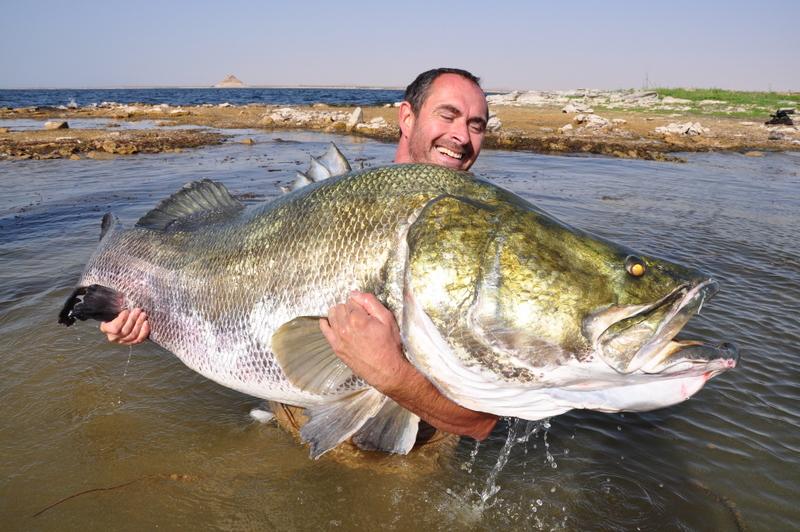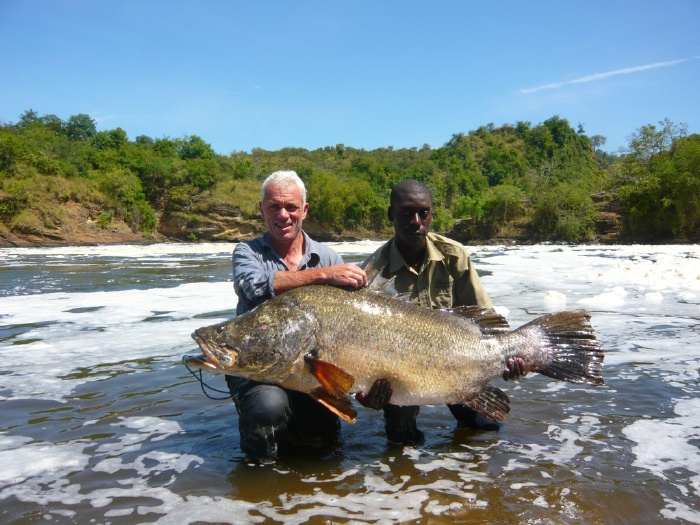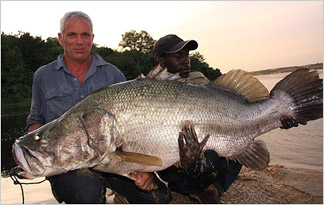
Lates niloticus
FAMILY
Centropomidae
TAXONOMY
Lates niloticus Linnaeus, 1758, Egypt.
OTHER COMMON NAMES
English: African snook; French: Capitaine; German: Nilbarsch;
Spanish: Perca del Nilo.
PHYSICAL CHARACTERISTICS
Total length 76 in (193 cm); weight 441 lb (200 kg). Body
large, elongate, and robust. Color silvery, with grayish blue
along back and grayish silver along flank and belly. Caudal fin
and portion of pectoral fin black to dark gray. There are 7–8
spines and 10–14 soft rays in the dorsal fin; the caudal fin is
rounded. Free edge of operculum bears a large spine.
DISTRIBUTION
Africa, in fresh and occasionally brackish waters. Present in the
Rift Lakes of East Africa, including Lakes Albert, Rudolph, and
Tana. Introduced into Lake Victoria and others within and
outside of the region, usually with catastrophic results for native
fish faunas. Also occurs in major river systems including
the Chad (and Lake Chad), Congo, Nile, Senegal, and Volta.
Present in Lake Mariout, a brackish water body outside
Alexandria, Egypt, near the Nile River.
HABITAT
Large lakes and major rivers and their larger tributaries; also
occurs in channels and irrigation canals, brackish-water lakes,
and estuaries. Larger adults prefer deeper water, smaller fishes
are found in the shallows.
BEHAVIOR
Swims in the water column, but may also associate with structure.
Generally solitary.
FEEDING ECOLOGY AND DIET
Highly voracious predator of fishes, especially freshwater herrings
in its native range, but also of cichlid fishes. Smaller
fishes feed upon crustaceans and insects in shallow water.
REPRODUCTIVE BIOLOGY
Maturity comes in two to three years; larger females reach maturity
later than smaller males. The spawning season varies
with latitude, temperature, and type of water body, and ranges
from February to November, although shorter seasons have
been reported. Presumably migrates to a specific site to court
and spawn. Eggs are scattered over the bottom or in the water
column, and are buoyant. Larvae are pelagic, there is no
parental care.
CONSERVATION STATUS
Not listed by the IUCN, but could be vulnerable to commercial
overfishing in its native range.
SIGNIFICANCE TO HUMANS
An important commercial and subsistence food fish and game
fish, raised by aquaculture for food and stocking. Stocking out-
side its natural range is greatly discouraged. Introduction of
this species into Lake Victoria resulted in the decimation of
most of a highly diverse and evolved endemic species flock of
cichlid fishes, in addition to the loss of other species endemic
to that great lake. Similar effects reported elsewhere.
Other popular Animals
Photo Gallery of - Nile perch





 Animalia Life
Animalia Life